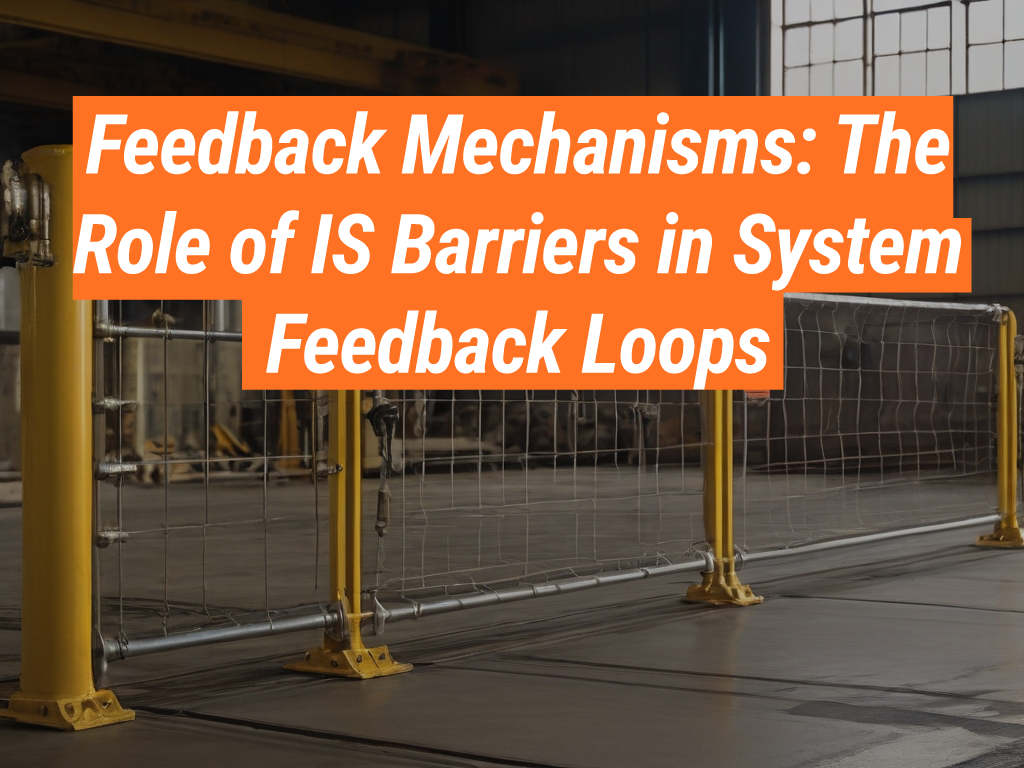Feedback mechanisms are integral to the functioning of any system, be it biological, mechanical, or digital. They provide a way for systems to self-regulate, adapt, and improve. In the realm of Information Systems (IS), feedback loops play a crucial role in enhancing system performance and user experience. However, barriers within these systems can significantly impact the effectiveness of feedback loops. This article, brought to you by the Intrinsically Safe Store, delves into the role of Intrinsically Safe barriers in system feedback loops. We invite you to visit our website to learn more about our offerings and how they can help you navigate the complexities of IS.
Understanding Feedback Loops in Information Systems
Feedback loops in IS are processes where the system’s output is used as input for future operations. This continuous cycle allows the system to adjust and optimize its performance based on the feedback received. Feedback loops can be either positive, promoting system growth and amplification, or negative, stabilizing the system and maintaining equilibrium.
The Role of Intrinsically Safe Barriers in System Feedback Loops
Intrinsically Safe barriers refer to any obstacles that hinder the smooth operation of an information system. These barriers can significantly impact the effectiveness of feedback loops in several ways:
- Delay in Feedback: IS barriers can cause delays in the feedback process, leading to outdated or irrelevant feedback that can misguide system adjustments.
- Distortion of Feedback: If the feedback loop is disrupted by IS barriers, the feedback may be distorted, leading to inaccurate system adjustments.
- Blocking of Feedback: In some cases, IS barriers may completely block feedback, preventing the system from making any necessary adjustments.

Case Study: Overcoming Intrinsically Safe Barriers in System Feedback Loops
A notable example of overcoming Intrinsically Safe barriers in system feedback loops is the implementation of real-time data analytics in healthcare systems. By leveraging advanced technologies, healthcare providers have been able to bypass traditional IS barriers, enabling immediate feedback and significantly improving patient care.
Statistics Highlighting the Impact of Intrinsically Safe Barriers
According to a study by the International Journal of Information Management, organizations that effectively manage IS barriers in their feedback loops are 33% more likely to outperform their competitors. This statistic underscores the importance of addressing IS barriers in system feedback loops.
Optimizing System Feedback Loops Despite Intrinsically Safe Barriers
IS barriers can significantly impact the effectiveness of system feedback loops. By causing delays, distorting feedback, or blocking it altogether, these barriers can hinder system performance and user experience. However, with the right strategies and technologies, it is possible to overcome these barriers and optimize system feedback loops. The Intrinsically Safe Store offers a range of solutions to help you navigate the complexities of IS and enhance your system’s performance. Contact us today to learn more about how we can assist you in overcoming IS barriers in your system feedback loops.


























